Red Globe grapes: characteristics and growing rules
Red Globe is a table type grapes... It was bred by scientists in California in the 70s. Only at the end of the 1980s was the variety included in the register of varieties. The grapes have gained significant distribution in Asian countries and in Europe. It is distinguished by its high taste characteristics, great resistance to long-term transportation and excellent storage. It is recommended that you familiarize yourself with the cultivation and care of the wayward plant before planting.
Content:
- Description and benefits of the variety
- Growing methods
- Terms and rules for planting a seedling
- How to properly care for grapes
- Pruning and preparing for winter
- Diseases, their signs and the fight against them
- Pests of grapes and the fight against them
Description and benefits of the variety
Red Globe is called the "red ball", which is true, because of the appearance of the mouth-watering berries. The appearance of the grape, its color and size are the distinguishing features of this type. The berries of the plant are large up to 4 cm in diameter and have a perfectly round shape. Under favorable growing conditions, each roll reaches 12-16 grams. The tone of the outer skin of the berry can vary from light pink to deep pink or even brown. In addition, the bunches acquire a dark tone during long-term storage. The original shade is lost and the berries turn brown.
The berries are presented in such a way that their skin is thin, but at the same time does not crack under the influence of external factors.
The inner flesh is dense, fleshy, when biting off the juice does not flow out, retaining its original qualities. The taste of the variety does not attract everyone's attention, the taste is noted as simple. Sometimes you can catch certain fruity notes. Inside the berry contains up to 4 large seeds. The sugar content of the fruit does not exceed 15%, while the acidity can vary within 4.6-7.5 g / l. all the acidity of the berries goes away even before the moment of full ripening. Therefore, the bunches can be harvested immature.
The clusters are large, conical in shape. The density of adherence of berries to each other is noted as average, which allows you to maintain the structure and diameter of each roll separately. The weight of the bunches may vary. Some do not exceed 500 g, others significantly exceed 1 kg. If all the conditions for favorable cultivation are fulfilled, the plant is influenced to eliminate pathogenic bacteria, then the weight of one bunch can reach 2.5 kg.
Red Globe is intended exclusively for fresh consumption. After planting in open ground, the first brushes from a young plant can be collected only in the 3rd year of growth of the shrub. The variety belongs to the group of medium or late maturing varieties. Its ripening period averages 140-155 days. The main difference between this type of grape is the increased yield of the variety. The shrub loves quality care. the disadvantage of the species is the instability to various diseases.
Growing methods
Red Globe grapes are a bulky variety. It must be placed on trellises or arbors. 3 methods are suitable for reproduction of a shrub:
- Seeds - this method takes place in life, but is used mainly by experienced breeders. For ordinary gardeners, a different breeding method for this original species is recommended.
- By cuttings - every year grapes are pruned in early spring or late autumn. From the remote runners of young shoots, excellent planting material will come out, which will fully retain all maternal qualities. In order for the stalk to give roots and develop a dormant bud, it is necessary to prepare a seedling with 4 buds, without a mustache and foliage. An oblique cut is made under the lower eye. Some growers believe that the longer the bottom cut, the more likely the seedling will produce a well-branched root system... All collected and prepared material is treated with copper sulfate. This is necessary to eliminate pathogenic bacteria and parasites that settle on the cuttings. In autumn, seedlings prepare planting material before the onset of the first frost. This is due to the fact that the stem at this moment contains all the nutrients necessary for the further development of an independent plant. After that, the cuttings are sent to a cold room for storage. When spring comes, the cuttings are taken out into fresh air and tested. Their bottom edge is cut and if juice comes out of it, then the seedling will be able to take root. Otherwise, the stalk is neutralized. Prepared selected cuttings are placed in warm water. Kept in it for 48 hours. On the third day, the planting material migrates into a solution that stimulates the formation of the root system. After 12 hours of soaking, the seedling is rooted in a specially prepared container, and covered with a plastic cup on top to create greenhouse conditions. Further care depends on how quickly the plant takes root and develops a ground green part.
- Layering is the easiest way to get a full-fledged seedling from the Red Globe mother bush. For this, the largest lash is chosen in the spring. It must be carefully bent to the ground. Dig a trench at its base and lay the vine in the hollow, but so that the buds look up. The bark can be cut under the kidneys. This is done so that each bud will form a separate shrub. For watering, it is recommended to use a growth stimulant solution. By the fall, thanks to this method, several daughter plants will be obtained. But it's not worth separating them yet. It is necessary to withstand the plant so that it overwinters the winter along with the mother shrub. Only in the spring can young bushes be separated from the mother plant and planted in new places of residence.
Growing in any way is easy, the main thing is to follow all the rules and recommendations. Competently selected planting material guarantees rapid growth of the root mass and obtaining identical maternal qualities.
Terms and rules for planting a seedling
Planting cuttings in open ground is recommended in the fall. The procedure is carried out 35-45 days before lowering the temperature regime and lowering the air degrees. During this time, the finished seedling will have time to root normally, grow additional roots, feed from the soil with useful substances introduced during planting and prepare for wintering.
In the first 2-3 years, it is recommended to cover the plant for the winter, regardless of the rooting conditions. If for some reason it was not possible to plant a seedling in the fall, then the process is carried out in the spring. The air temperature should be set at around +5 .. + 10 C, and most importantly, the last return frosts should go through.
For a successful landing, you must follow a number of rules and recommendations:
- The choice of location should be in a sunny location.
- Red Globe grapes do not like drafts and strong northerly winds, so you should think about where it is best to place it. A fence on the south side or a structure that blocks out cold winds is ideal.
- The soil must be selected fertile, loose and with neutral acidity. If necessary, during planting, you should make organic and mineral fertilizers.
- Before planting, you should dig a depression in the ground, 20-50 cm deep, but so that the root system of the seedling fits perfectly into the resulting hole.
- It is recommended to lay out gravel at the bottom of the pit, then place rotten boards or branches.
- A pipe with a diameter of at least 1 cm is placed from the edge. It is necessary for internal irrigation.
- Prepared fertile soil is poured on top of the branches. It must be poured in the form of a hill.
- The seedling is removed from the flowerpot and the earth is shaken off from the roots. After that, the rhizomes are dipped into a solution of clay and rotted mullein.
- The treated seedling is placed in the ground, while its roots must be straightened.
After that, everything is covered with earth. When rooting, it is necessary to slightly tug the plant up and down, so that the soil wakes up between the smallest roots. This is required so that no hollow holes remain in which moisture can stagnate and provoke the onset of diseases.
How to properly care for grapes?
Red Globe is a rather capricious grape variety. It requires increased attention to itself, but at the same time, after fruitful work, the plant responds with a large harvest.
In the first 2-3 years of growth in a new place, the Red Coffin seedling needs increased care and attention. It is recommended to follow the following rules for plant care:
- After the rain, weeding is carried out only after 2 days. This is necessary to remove the crust of dried earth.
- It is imperative to periodically weed the soil at the base. All grown weeds are eliminated without regret. They extract useful substances from the soil intended for the development of a young seedling.
- When placed in a sunny area, you should control the time the plant is in the sun. The leaf plate of Red Glow is quite delicate that with prolonged exposure to direct rays of the luminary at lunchtime, burns are formed on the greenery.
- The condition of the plant should be constantly monitored, visually detecting diseases or parasites, you can eliminate them manually or use small means to neutralize diseases.
- Top dressing periodically. In the spring, the introduction of nitrogen-phosphorus-potassium dressing has a positive effect. Care should be taken to add preparations containing nitrogen. In the adult period, an overdose stimulates the growth of greenery, while the development of flowers is not carried out.
When the requirements are met, an amazing appearance of the brush with a rich shade of berries and excellent taste is obtained. Duration of storage of bunches under favorable conditions reaches 3-4 months.
Pruning and preparing for winter
Fruit vine pruning should be done every season. It is performed both in spring and autumn. In spring, the procedure is carried out after the last appearance of return frosts, at an air temperature of +5 .. + 7 C. In autumn days, the event is carried out immediately after the leaf has fallen. In the northern parts of Russia, the procedure is carried out before the onset of frost in 30-45 days.
The Red Glob variety actively responds to pruning, so it should be pruned according to a specific pattern. It is recommended to shorten each shoot by 7-8 eyes. In this case, it is necessary to eliminate all weak and non-viable shoots, as well as to carry out sanitary pruning, in which all shoots beaten by a pest or weather conditions are eliminated.
On healthy runners, it is required to leave no more than 6, but not less than 4 shoots that will drive out the fruit arrow. One fruitful shoots should have one bunch.
After the grapes have faded, the brush is formed. The common part is removed from the total volume of the bunch, so that no more than 3-4 branches remain. When the formed and grown berries reach 6 mm in size, thinning of the bunches is carried out in order to deliver sunlight to each of the berries.
The Red Globe variety is frost-resistant grapes, it has the ability to withstand significant drops in temperature, reaching -21 C.
Therefore, in the southern and central regions of Russia, it is possible not to carry out the procedure for sheltering an adult bush for the winter. But for the Northern areas, both an adult and especially a young seedling, shelter for the winter is mandatory.
To do this, it is recommended to remove the plant from the trellis. Put spruce branches, fallen leaves or sawdust on the ground. Put the runners rolled into a circle on the embankment. Cover the top with burlap or special material necessary for covering work. It is not recommended to use oilcloth for these purposes, it under the first rays of the sun, warming up, provokes a greenhouse effect, which leads to diaper rash and rotting on the bed of valuable grapes.
Diseases, their signs and the fight against them
The Red Globe grape has a significant drawback - it is sensitive to various kinds of diseases:
- Mildew or powdery mildew false type on the plant. On the shrub, yellow spots appear, of an oily character, which affect all the greenery of the plant. At high humidity, a powdery white coating forms on the underside of deciduous plates. To combat the disease, the leaf plates should be periodically thinned out, so that there is space for good ventilation, both greenery and bunches. It is not recommended to plant the plant in lowlands or other places where moisture accumulates. When a disease is acquired, it is required to spray the plant with 1% bordeaux liquid 3-7 times per period.
- Oidium is a fungal disease that spreads to all parts of the bush. On all green parts, a powdery sticky coating appears gray. Berry rotting, foliage drying out occurs. For the fight, spraying with colloidal sulfur is used. If a disease occurs, it is necessary to remove all affected areas of the plant.
- Black rot - appears on berries, less often on foliage. On the fruits, just before the moment of ripening, depressed spots form, the bunch quickly becomes completely covered with disease. Infected berries dry up and remain on the bunch in a dried state. To combat the disease, it is necessary to remove all fallen leaves away from the vineyard, preferably to burn them. If a problem occurs, it is recommended to act with a solution of 1% Bordeaux liquid.
If you follow the development of the plant, control its condition, then the onset of the disease can be recognized already at the first signs. Timely started treatment will preserve both the appearance of the shrub and the entire crop.
Pests of grapes and the fight against them
The most common parasites for the Red Globe vineyard are leafworm, phylloxera and itch (they most often infect the fruitful vine):
- Phyloxera has the peculiarity of affecting not only the leafy part, but also the root part of the plant. An insect, falling on a leaf, lays eggs, from which more than 500 larvae hatch at a time. These parasites feed on plant sap and periodically lay new eggs. Thus, the population size increases over the summer to such a size that the plant dies under their pressure. It will not be possible to eliminate the pest on its own, the invasion must be reported to an inspection specializing in plant quarantine.
- Another dangerous parasite for the vineyard is the leafworm.This insect is a butterfly that lays eggs on the leaves. Subsequently, larvae hatch from the eggs, feeding on the sap of the plant. To combat, it is necessary to use chemical insecticides, such as Karbofos, Sumi-Alpha or Kinmix.
- Itching - a tick, getting on a plant, provokes the formation of galls. For wintering, it is taken under the scales of the buds. Crawls out in the spring with the appearance of the first leaves. To neutralize a dangerous pest, it is necessary to act with chemicals during the swelling of the buds and their subsequent blooming.
Thus, Red Globe grapes are distinguished by an interesting appearance and the need for specific care. It is imperative to ensure that diseases and pests do not appear on the plant, due to the fact that the shrub does not tolerate negative external influences and may die.
More information can be found in the video:



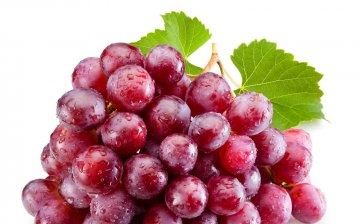
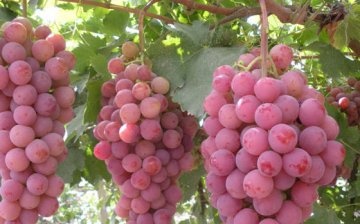
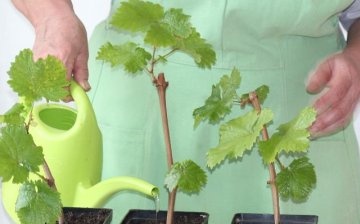
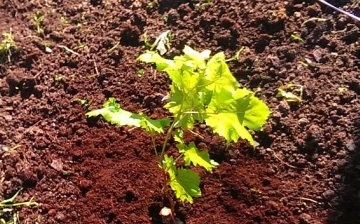
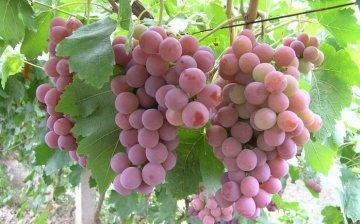

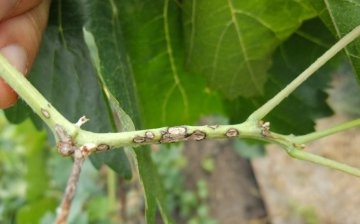
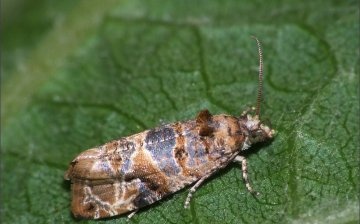








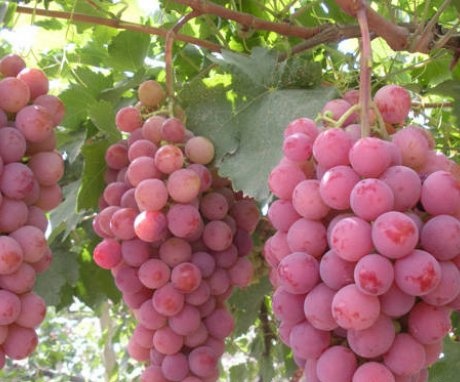

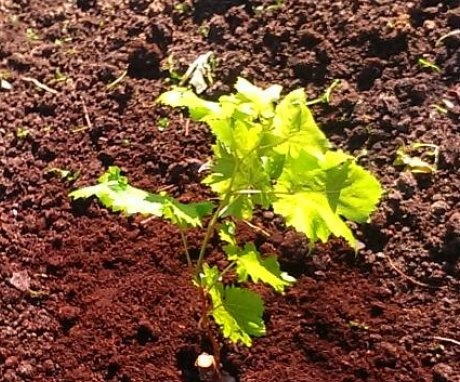
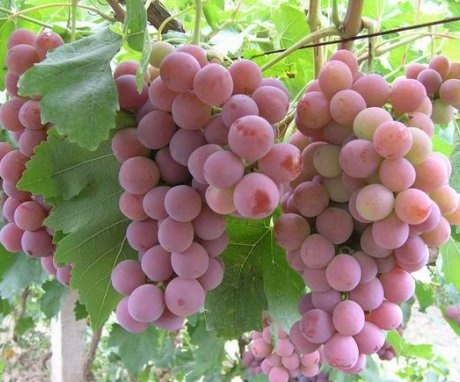
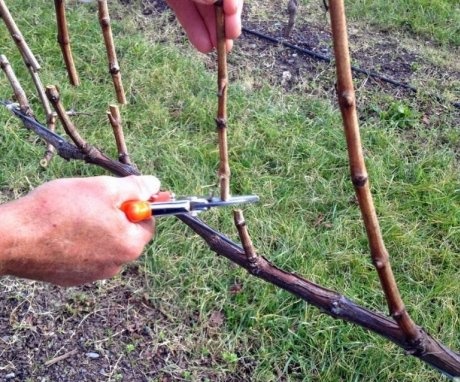
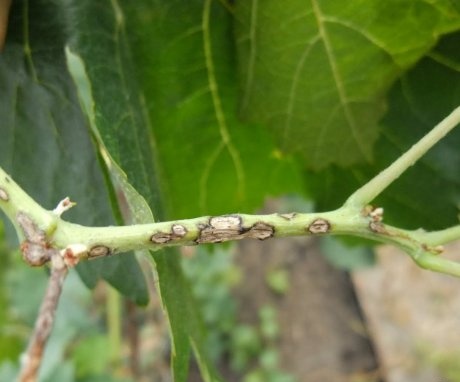
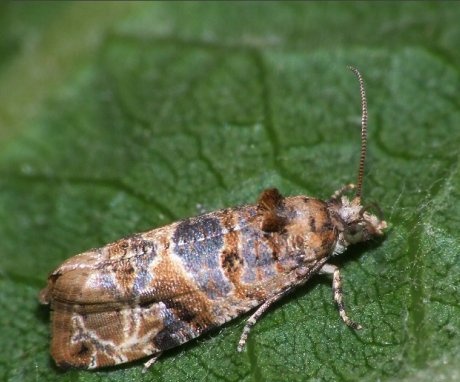
A very good and, most importantly, frost-resistant grape variety. In our region, it definitely does not need to be covered, but planted near a gazebo or a terrace. It is not clear why direct sunlight leaves burns on the leaves, because any grape variety, as a rule, loves the sun.